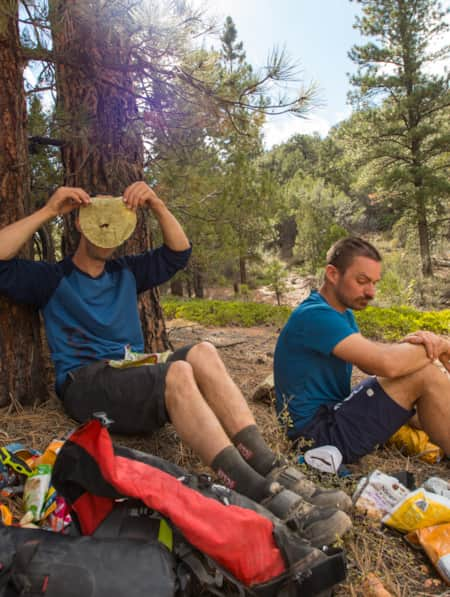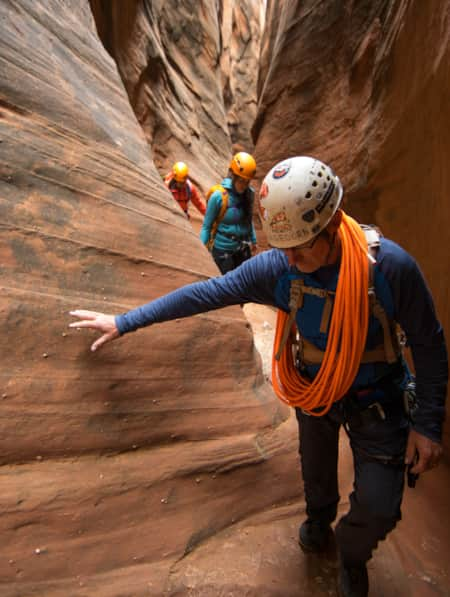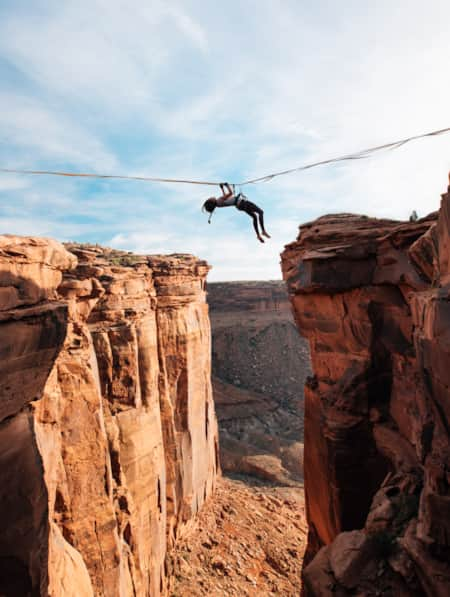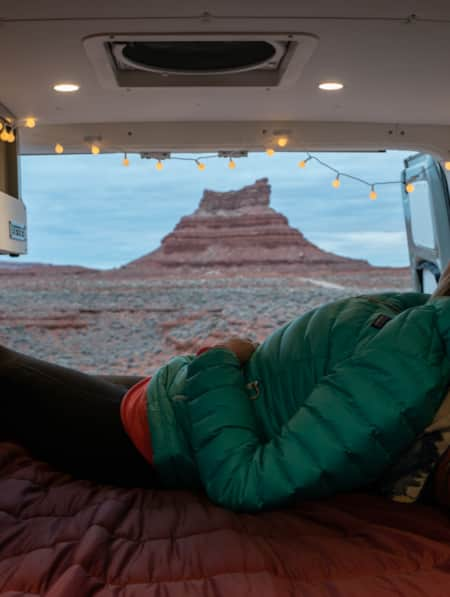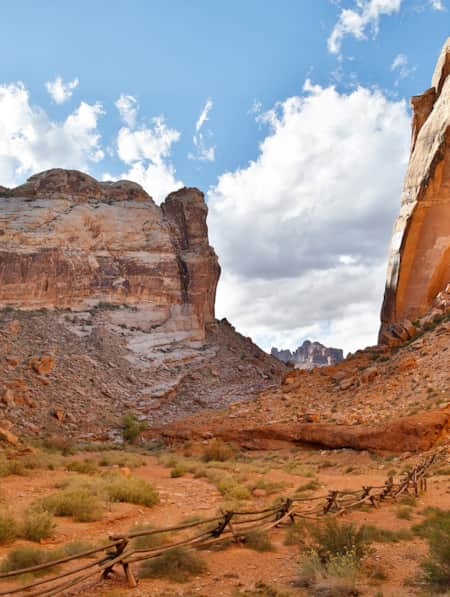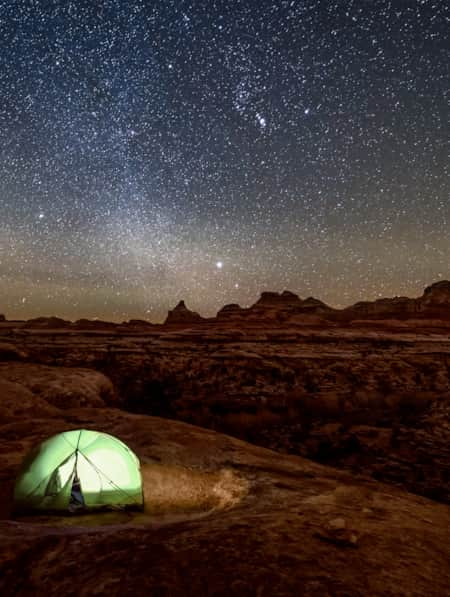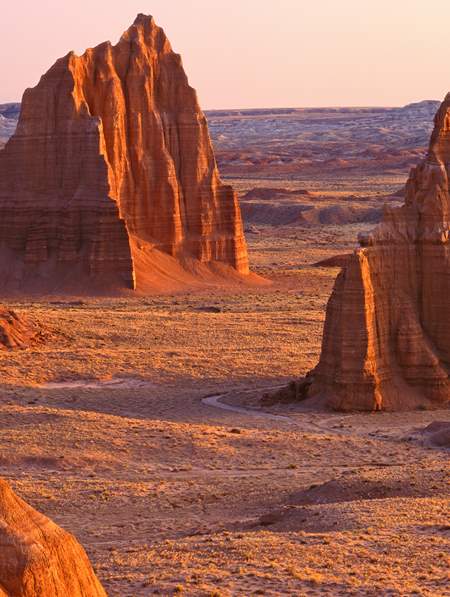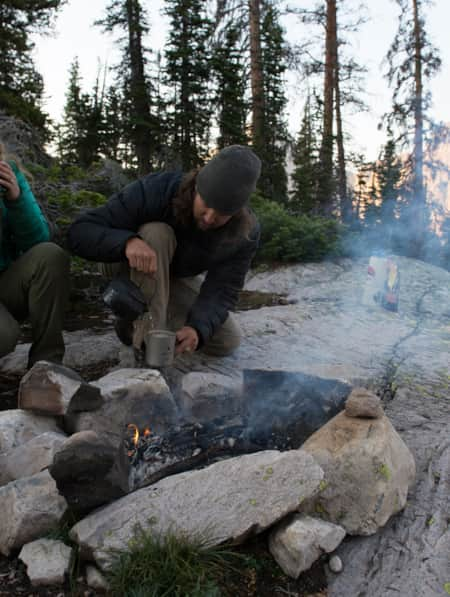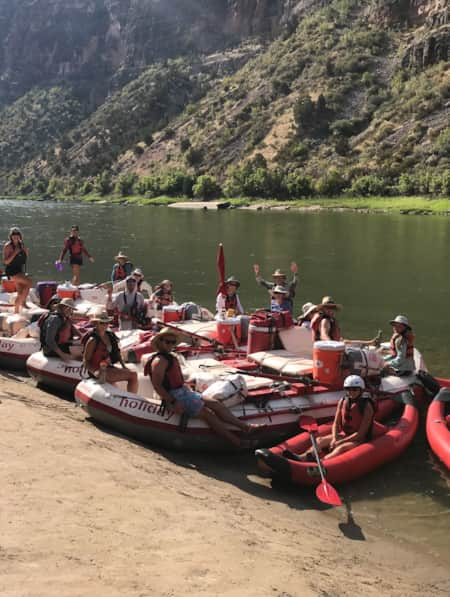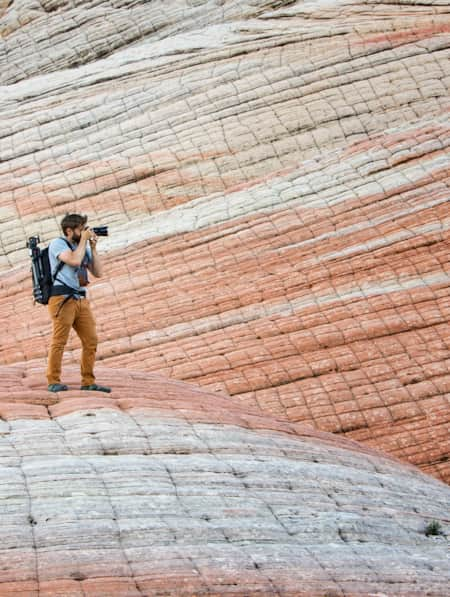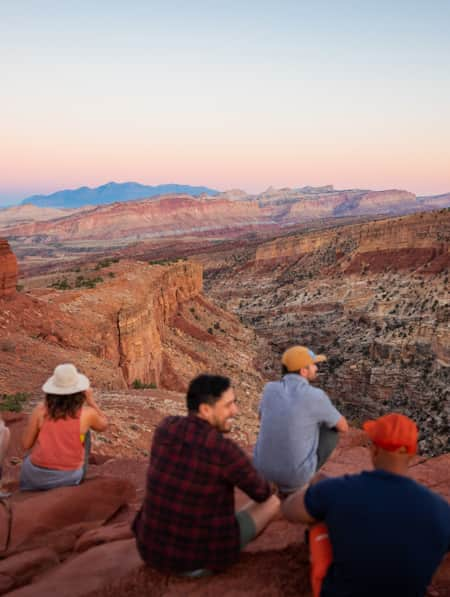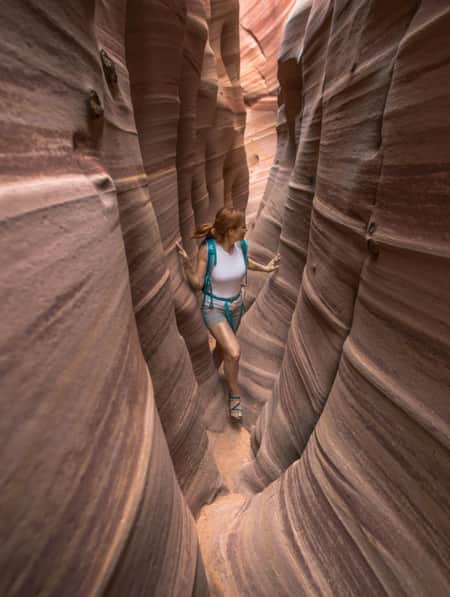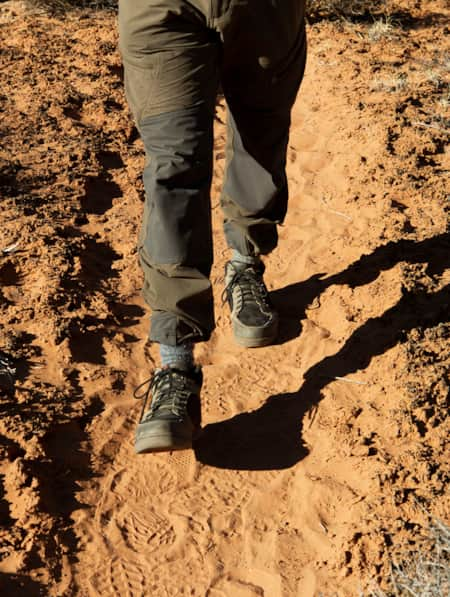You're Inspired to Go Off the Beaten Path. Now What?
Here’s how to navigate Utah's backcountry safely.
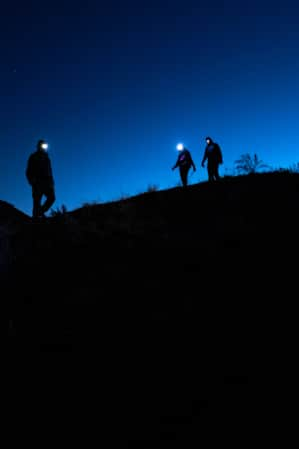
From the alpine scenery in Logan Canyon or Salt Lake’s Cottonwood canyons to the north, to the breathtaking panoramas of Zion National Park to the southwest, to the mountains and mesas of wonderland of Bears Ears National Monument to the southeast, Utah’s stunning and dramatic landscape amazes tourists and locals alike, inspiring them to go off the beaten path.
Visiting one of Utah’s Mighty 5 national parks, 44 state parks or going for a hike on forest service or public lands can mean a couple of hours to a several-day adventure. But if you’re ready to graduate from the designated trails to escape the crowds and head deep into the backcountry, you’ll want to make sure you’re properly prepared.
If you dream of diving into Utah’s wilderness, you want to have an unforgettable experience that will etch lasting memories. And to help you truly experience that once-of-a-lifetime trip, I asked experts to share their top advice.

Photo: Ted Hesser
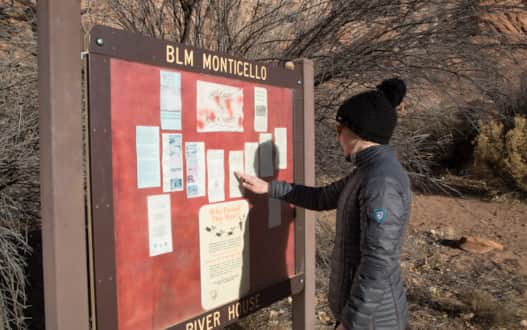
Signs can give you safety and historical information.
Photo: Sandra Salvas
Get Educated Before You Go
Once you’re in the wilderness, you have no one to rely on but yourself, so fill your reservoir of knowledge before gearing up. As you research, remember, you can think of every detail, but even the best-laid plans can take a different turn, especially in the backcountry.
Education is key to having a trip that meets your expectations, says Nathan Martinez, park manager at Kodachrome Basin State Park. Before transferring to Kodachrome, he worked with the search and rescue team at Goblin Valley State Park.
Martinez suggests people familiarize themselves with REI’s expert advice section on their website. For example, REI’s experts recommend investing in a premade first-aid kit because they can save time and money over assembling your own. Another good reason to buy a premade kit is it ensures you don’t overlook an essential tool or supply.
Not sure what gear to pack? REI lists the “Ten Essentials,” which includes a headlamp, sun protection, a personal locator beacon, and a satellite messenger. REI also offers wilderness first aid classes, which are especially helpful for those planning on going into the backcountry alone. “It will help you be more prepared for a medical emergency that might come up,” he says.
If your itinerary is flexible or you’re planning multiple days in the backcountry, Martinez recommends having a personal locator beacon (PLB) or a SPOT satellite messenger. They function a little bit differently. The PLB is a one-time upfront cost. If you have an emergency, you activate the device, which alerts the closest search and rescue team. The satellite messenger is a little different, actually sends messages with it and it also gives out a GPS signal.
Martinez shared a story about one search and rescue involving a family hiking the canyon. The father and daughter continued and the mother and son went back. Usually, somebody splits up, he said. The question in these situations is: Do you stay put or do you find your way out? “If you know somebody is looking for you, stay put,” he says. “If nobody is looking for you, if nobody knows you’re out there, you have to find your way out.”
Martinez also suggests leaving an itinerary with somebody else who isn’t in your group. After a certain amount of time, have them call 911 and get search and rescue started. If you’re doing a day hike, for example, and you’re not back by midnight, have them call 911 and get search and rescue started. (Learn more about how you can support Utah’s local search and rescue teams with a Utah Search and Rescue Assistance card.)
Whether you’re planning a day hike or a four-day backpacking trip, make sure you do a good job planning. “Don’t rely on a single source of information,” Martinez says. If you’re planning a backcountry trip make sure you check different sources because some sources will forget things.”
Ray Kelsey is the Bureau of Land Management (BLM) Utah National Conservation Lands Lead. He was the outdoor recreation planner for the BLM for 15 years before assuming his current role, and he agrees with Marinez. “Not being prepared for whatever outing you’re doing will dramatically impact the quality of your experience,” Kelsey says. “It will also impact your expectations.”
When you’ve identified a particular area, do your research, educate yourself and call the BLM or the forest service and find the local office in charge of that location. “They’re going to be the subject matter experts in the area, on the ground,” Kelsey says. “They’re the people who are the most familiar with the area you’re planning to visit, so they’ll point you in the right direction.”
Call Ahead of Time, Always!
When visiting a particular destination, Kelsey says to find out whose jurisdiction it is. “On our site, we have an interactive map that has all that information on it,” he says. You click on it and it will show you land ownership, special designations, wilderness areas, and national monuments –it’s free and available to the public.” You can also click here for the BLM’s georeferenced maps.
While visitutah.com has great resources to plan your trip, Kelsey says there are also local universities that provide training classes in outdoor recreation. You can sign up with a community college or university recreation program and get trained on an activity you’ve never done before.
Some schools also have rentals. “They are good options if you don’t want to spend a bunch of money on equipment – if you just want to try it out, rent the equipment and see if it’s something you want to get into,” he says.
Kelsey says outdoor retailers are excellent resourses for literature, and Utah is blanketed with guidebooks on hiking, camping, fly fishing, whitewater rafting, canyoneering and backcountry skiing. If your heart is set on a particular adventure, chances are there’s a guidebook about it.
When planning on going into a remote place, it’s wise to look into off-road vehicles as opposed to rental vehicles from the airport. In many cases, renting a high-clearance jeep or an off-highway vehicle (OHV) locally is a much better option than using an SUV that the rental company may not want off-roading, Kelsey says. (Read: A View From the Past: Reconstructing forgotten history on the Transcontinental Railroad Backcountry Byway.)
Often, the places you see while off-roading will mean just as much as traveling from highlight to highlight. Think of a “backcountry road” as a place where if you had a flat tire, or if you had no cell service, or if you became injured and had no means of communication, search and rescue would have to look for you. Usually, the benchmark is two miles from a major road or developed area.
With Utah’s hundreds of miles of backcountry roads, such as South-Central Utah’s Paiute Trail, a 278-mile loop of dirt and paved roads with no beginning and no end, and the Arapeen Trail, a family-friendly trail two hours south of Salt Lake City on Highway 89, there’s so much to choose from. (Read: The Unparalleled Paiute ATV Trail and Riding the Arapeen ATV Trails of Central Utah
Having the right vehicle for offroad conditions is critical. A few years back, a family driving to Salt Lake City in early spring followed a shortcut given by their mapping app on their phone that took them off pavement into Utah's west desert, says Kelsey. They got lost and then stuck in deep mud at Erickson Pass south of Dugway and north of Little Sahara.
The family was driving a minivan and not prepared for backcountry conditions. They were rescued by a search and rescue team in bad weather with wind and cold rain. The family was dressed in shorts and T-shirts. To avoid a similar fate, the BLM recommends visitors bring water, food, and clothing; research road conditions; always have a spare tire; and ensure their vehicle has adequate tires and clearance for the roads they will travel.
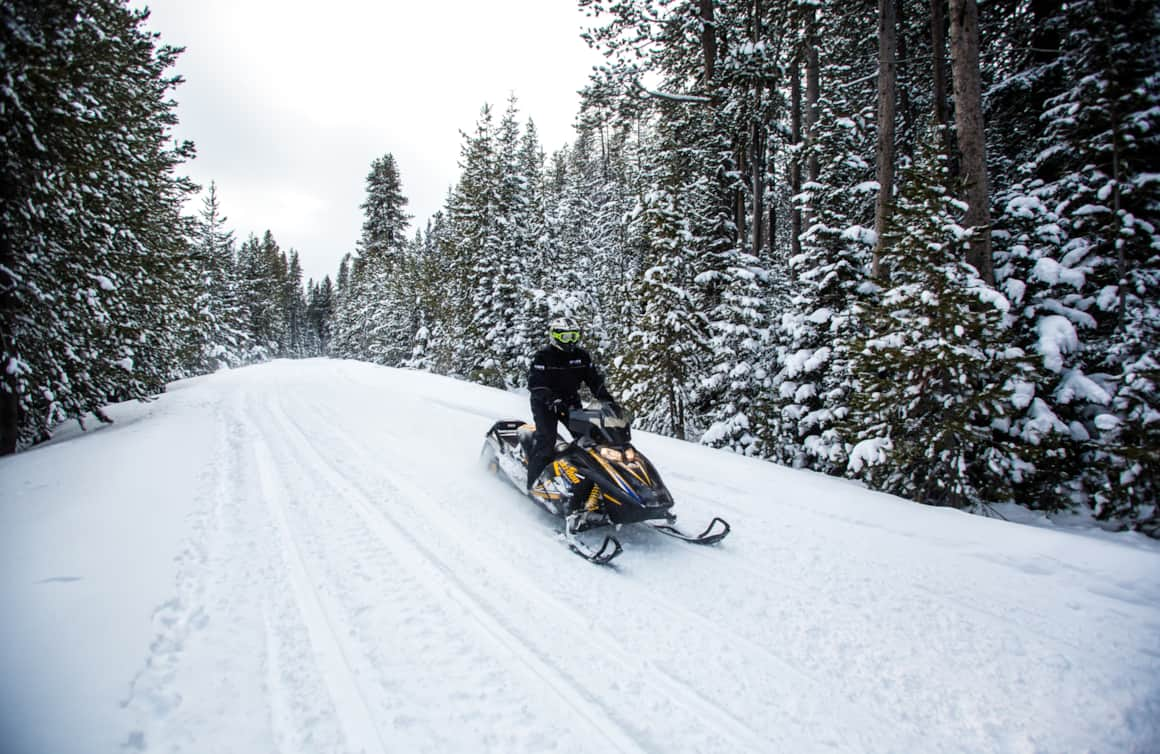
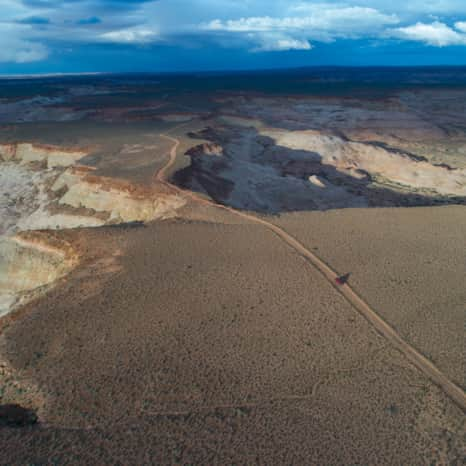
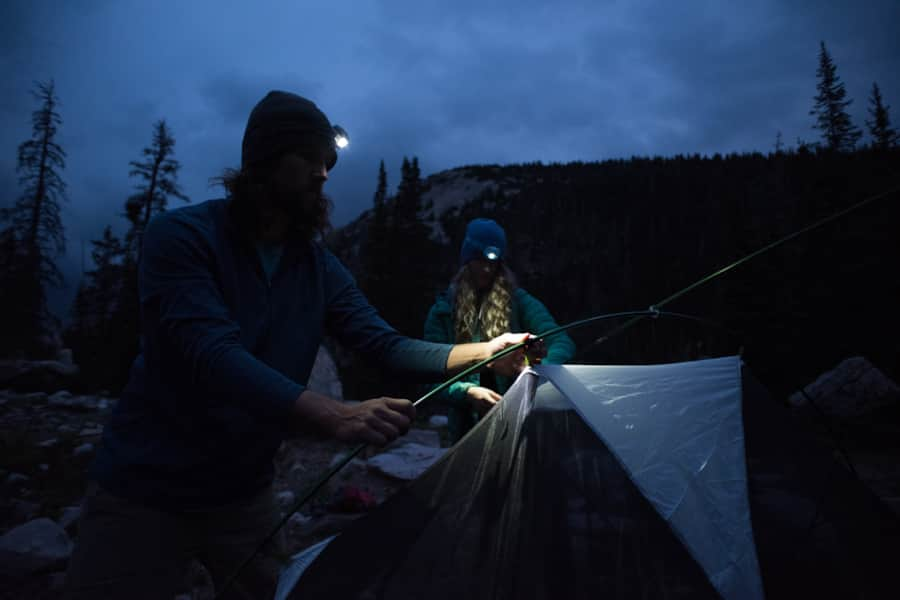
Look to Local Guides
Maybe you don’t have time to sign up for a class or read guidebooks, but you still want to experience Utah’s wilderness and backcountry. In that case, you can hire a local guide. “If you can find somebody who can show you the ropes or who knows the area or is experienced in a particular activity, seek them out and partner up with them,” Kelsey says.“I don’t advise people go out to a new area and do a new activity all by themselves.”.
Christopher Hagedorn is a guide, wilderness instructor and owner of Get in the Wild Adventures. Hagedorn has been an outdoor adventure explorer since he was a young boy growing up in the Southern Appalachian Mountains. (Watch: Permit of Solitude: A Guided Adventure Through Robbers Roost.)
Hagedorn says he has helped guide “incredible outdoor experiences” for people from all over the world. Less experienced travelers can tap into Hagedorn’s expertise by taking advantage of one of his outdoor educational courses, a guided adventure trip, or an all-inclusive wilderness vacation.
When people take courses, they’re less likely to make mistakes. “In the wilderness, if you’re not prepared, it can get dangerous really quickly,” he says.
Lack of navigational knowledge is the most common mistake people make in the backcountry, Hagedorn says. “These days, everyone wants to rely on GPS – the art of map and compass is going away and it’s still a critical skill,” he says, adding: “A navigational error can get you into big trouble.”
Hagedorn says the root of learning how to navigate safely in the wilderness is about understanding topographical maps. “GPS devices — we all use them,” he says. “There are a lot of different analogs and apps, but at the end of the day, we’re using a screen that’s relatively small versus a big map that you can print out.
He suggests downloading phone apps before you get in the wild and don’t have service, but bring a map in addition. “To this day, I carry both, my map and compass and a GPS,” he says.
Hagedorn gave an example of a real-life navigational error that occurred in 2016. A father took his two teenage children on their first technical canyoneering adventure at Robbers Roost. His plan was to descend a beginner friendly canyon in the area for a great day of adventure. They descended into the canyon and went down the first rappel and pulled their rope. As they continued down the canyon, the obstacles became more than they could handle. At this point, they could not descend the canyon or retreat. There was no escape.
Fortunately, a retired couple where the family was camped observed their departure that morning. At the end of the day, they noticed the family did not return. The couple contacted search and rescue, who arrived and rescued the family from the canyon.
As it turned out, the father made a navigational error and descended the wrong canyon. He was one canyon away (less than one-quarter mile away) from the canyon he thought he was in. The canyon he descended was one of the most difficult canyons in Southern Utah. They were quite lucky that the retired couple had observed their departure and contacted search and rescue, he says.
As for other common mistakes people make in the wilderness, he listed people getting their bodies stuck in narrow canyons, not being prepared, and not understanding their limits.
“If the conditions suggest you shouldn’t be going, reschedule your trip for another day,” he says. “Sometimes, people push forward and do something they probably shouldn’t have done.” Looking at Southern Utah specifically, the biggest thing I see is people not being prepared on the navigational side and over-estimating their abilities to get themselves out of situations they think they can get themselves out of.”
If you’re wanting to learn the skills on your own, Hagedorn suggests finding a company that teaches wilderness skills, such as backcountry navigation, and to meet with groups and learn from them. “The bottom line is to travel in the wilderness and backcountry safely, you’ll want to learn those skills,” he says.
“Take courses from as many instructors as you can, because everybody brings a different perspective to the table,” Hagedorn says. “To be the most well-rounded, look to different individuals and companies to learn those skills from.”
If you’re seeking a “challenge,” such as the Dirty Devil – Robbers Roost Wilderness Area, one of the most wild and remote landscapes in the Lower 48. Hagedorn says to be well-prepared in backcountry travel and navigational techniques, and to be prepared to survive on your own. For this reason, it's helpful to hire a professional guide to help facilitate a fun, safe adventure in this spectacular and awe inspiring redrock wilderness area.
“I imagine you’ve heard about one of the most notorious rescues in this area that was highlighted in the epic Hollywood movie, 127 Hours. Aron Ralston got his arm stuck in a canyon and was trapped for several days all alone. He survived by cutting off his own arm. Getting one's body physically stuck in canyons is another very real hazard in this area.”

Land Manager Know-how
Be prepared for the unexpected, advises Jennefer Parker, district ranger for the U.S. Forest Service’s Logan Ranger District, Uinta-Wasatch-Cache NF. “Visitors need to take along food, plenty of water, a spare tire and a jack,” Parker says. “Dress properly for any conditions: dress in layers, wear proper footwear.” People often don’t check with local agencies about rules and regulations, seasonal conditions or road restrictions, and that’s how they get themselves in trouble. It’s the visitor’s responsibility to familiarize themselves with the rules and conditions. “A simple phone call can make all the difference,” she says.
Parker’s key advice for people who want to go off the trails in the backcountry:
- Check the weather/avalanche forecasts.
- If camping, plan to pack out EVERYTHING you packed in (garbage, etc.) and store your food safely (Be Bear Aware!).
- Think about a responsible plan for when nature inevitably calls. (Read: "How to Poop in the Outdoors")
- If you’re planning a trip in a designated wilderness area, your trip may have specific regulations that require additional planning. Check with the closest local office.
- Don’t depend on technology; your devices may not work when you need them and you’ll likely have spotty cell phone coverage.
- Make sure someone knows where you’re going, your expected route and when you plan to return. If your route changes, let them know ahead of time. If you don’t let them know and you go missing, search and rescue will look in the wrong places for you.
- If road, weather and trail conditions deteriorate, reevaluate and adjust your plans accordingly.
- Many apps cannot be trusted. Consider using Avenza app (it’s free and works when there’s no cell phone service) or use paper Forest Visitor and Travel Maps.
It seems that every spring, as the temperatures start to warm in the valleys, visitors get an itch to get outdoors, says Parker. In the Logan Ranger District, it is inevitable that someone will attempt to drive to the trailhead of Tony Grove – White Pine Lake, and get stuck in the snow. This paved stretch of road is only a distance of four miles off Highway 89 to the trailhead, but this road starts at an elevation of 6200 feet and ends at 8200 feet, she says.
The road remains ungated for snowmobiles. This road is not plowed or maintained for winter travel; it is groomed for snowmobiles to gain access to higher elevations where snow persists. On a typical year the parking area will not be accessible to wheeled vehicles until the snow melts in late June.
“It seems every year we have a vehicle that gets stuck in the snow because they attempt to break through a snow drift. Sometimes, lighter weight vehicles get far enough up the snow-covered road that even a tow truck can’t retrieve them.
“Depending on the dates, these vehicles can be cited for driving a wheeled vehicle on a groomed snowmobile trail. Know before you go! We can tell you that this is not a road that is maintained for winter travel. We can tell you how much snow is still at the parking lot at Tony Grove or if the road is clear to the trailhead.”
Experts repeatedly mentioned the Leave No Trace organization, so consider visiting the website of the nonprofit organization for training and outdoor courses.
Where’s your wild adventure in Utah going to take you? Whether you’re headed to one of the favorite parks in the Mighty 5® or to one of the state’s hidden gems in the backcountry, get started planning your trip today.


